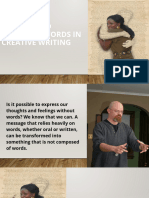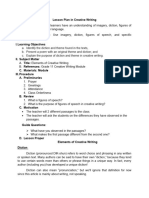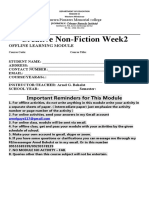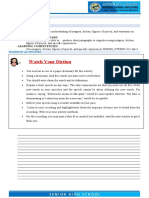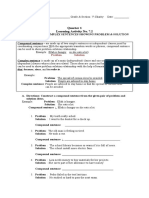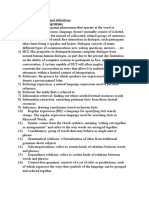0% found this document useful (0 votes)
31 views9 pagesModule 3 Diction and Syntax
This document discusses the elements of creative writing, focusing on diction and syntax. It outlines the objectives for learners, the importance of word choice and sentence structure, and the criteria and types of diction. Additionally, it explains how syntax functions in poetry and prose, emphasizing its role in conveying meaning and tone.
Uploaded by
delosreyeshainnah5Copyright
© © All Rights Reserved
We take content rights seriously. If you suspect this is your content, claim it here.
Available Formats
Download as DOCX, PDF, TXT or read online on Scribd
0% found this document useful (0 votes)
31 views9 pagesModule 3 Diction and Syntax
This document discusses the elements of creative writing, focusing on diction and syntax. It outlines the objectives for learners, the importance of word choice and sentence structure, and the criteria and types of diction. Additionally, it explains how syntax functions in poetry and prose, emphasizing its role in conveying meaning and tone.
Uploaded by
delosreyeshainnah5Copyright
© © All Rights Reserved
We take content rights seriously. If you suspect this is your content, claim it here.
Available Formats
Download as DOCX, PDF, TXT or read online on Scribd
/ 9


